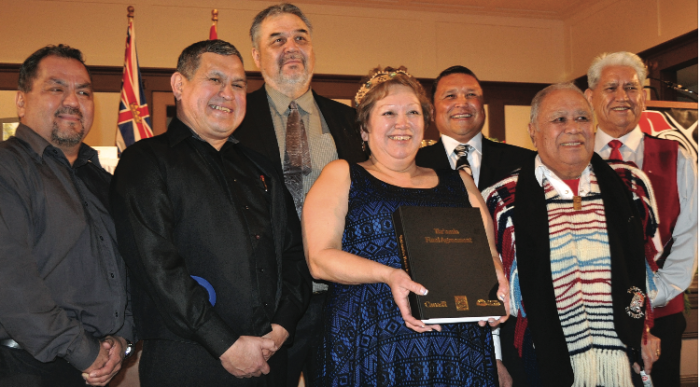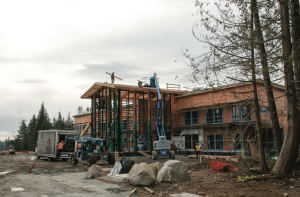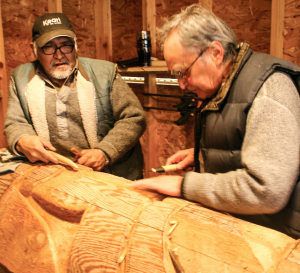Tla’amin readies for Big Day
By Cara McKenna
Weeks before treaty effective date at Tla’amin First Nation, the mood in the community is electric.
Most staff is holed up in offices or meetings, figuring out the final details before April 9.
Others are hard at work on construction of the impressive new government house. It is about three months behind schedule and workers are trying to get the center atrium ready for use on the big day.
Another group is carving red cedar totem poles for the building’s front entrance. The poles will represent the nation’s past, present and future as it moves along with treaty.
Everyone is busy… everyone is talking about treaty… and many are anxious. There have been decades of buildup and now it’s crunch time.
Tla’amin will be the latest of several nations to sign a treaty with BC and Canada including Tsawwassen and Nisga’a. The agreement will give Tla’amin the chance to be self-sufficient, implement its own laws and solidify its rights over its territory. It will also bring in millions of dollars.
But, like all BC treaties, it has caused controversy among the band’s members. Some are excited that the treaty will allow Tla’amin to self-govern, but others are worried about whether the treaty is the right decision, and what impact the fast changes will have on generations to come.
Many, from both the pro- and anti-treaty sides, are feeling nervous about whether it’s the right decision.
Denise Smith – Kwy em tomolx – who is the land and natural resources negotiator, said it’s not going to be a painful change, it just means the band gets to implement its own rules rather than following the Indian Act.
“It’s not going to be a dramatic, earth-shattering change, but it is going to be a change and I’m excited about that,” she said.
“We’ll own our land, we’ll actually have economic opportunities on our land. That’s big.”
During the second week of February, the nation’s leadership met with the treaty society to pour through each of about 25 laws so the legislation can start being passed at midnight on April 4.
The rules have been the biggest source of the treaty society’s work, Smith said, and cover governance and finance, land and resources, as well as community and social.
Smith, an ex-chief, who has been working towards effective date for more than 30 years, said she’s most looking forward to “stabilizing the ship.”
“It’s been a rocky road for a long time. We’ve had a lot of big bumps in the road over time and we can do it for ourselves now,” she said. “I think that’s the best thing.”
She added that the work is not over.
“There are things in the treaty that will happen after effective date that still need some work,” she said. And we have to hold the province’s hand to the fire on this agreement. … (It) has to come alive and live.”






